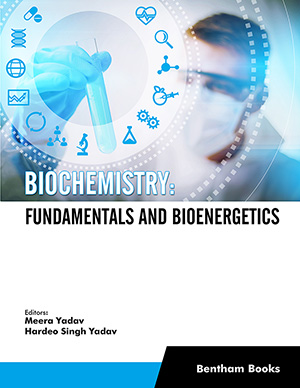Abstract
Background: Nitric oxide synthase (NOS) catalyzes the formation of nitric oxide (NO) and citrulline from L-arginine, dioxygen (O2) and nicotinamide adenine dinucleotide phosphate (NADPH) in a two-step reaction, with the enzyme-bound intermediate Nω-hydroxy-L-arginine (NHA). Previous electron paramagnetic resonance (EPR) studies of NOS reaction have shown that (6R, 1'R, 2'S)-6-(l',2'-dihydroxypropyl)-5,6,7,8-tetrahydropterin (H4B) acts as a single electron donor in both steps of the reaction, resulting in transient generation of a tetrahydropterin cation radical (H4B•+).
Methods: H4B•+ can also be chemically generated in strongly acidic solutions. EPR studies of chemically generated H4B•+ and similar pterin radicals date back to the 1960s. However, the reported paramagnetic parameters of H4B•+ in NOS do not seem to match the corresponding reported parameters for either H4B•+ or other pterin centered radicals chemically generated in solution. In particular, the rather isotropic hyperfine coupling of ca. 45 MHz for 1H6 of H4B•+ in NOS is at least 15 MHz larger than that of H4B•+ or any other previously studies pterin solution radical. In the work reported here, a combination of 9.5 - 9.8 GHz contentious wave (cw-) EPR, 34GHz 1H electron nuclear double resonance (ENDOR), spectral simulation and Density Functional Theory (DFT) calculations was used to investigate this seeming discrepancy.
Results: A plethora of data from 9.5 - 9.8 GHz cw-EPR, 34GHz 1H ENDOR, spectral simulation and Density Functional Theory (DFT) calculations suggest that the differences in the paramagnetic parameters of the chemically generated H4B radicals in solution and those of H4B radical in NOS stems from the presence of two different conformers of the same cation radical H4B•+.
Conclusion: We demonstrated that the differences in the paramagnetic parameters of the chemically generated H4B radicals in solutions and those of the H4B radicals in NOS are consistent with the presence of two different conformers of the same cation radical in the two media.
Keywords: tetrahydrobiopterin, pterin, nitric oxide synthase, NOS, EPR, ENDOR, DFT, RFQ
[http://dx.doi.org/10.1042/bj3470001] [PMID: 10727395]
[http://dx.doi.org/10.1016/S0021-9258(18)70516-4] [PMID: 13525410]
[http://dx.doi.org/10.1016/S0021-9258(18)69759-5] [PMID: 14404871]
[http://dx.doi.org/10.1073/pnas.50.6.1085] [PMID: 14096182]
[http://dx.doi.org/10.1016/0006-291X(64)90141-X] [PMID: 26410913]
[http://dx.doi.org/10.1016/S0021-9258(18)93832-9] [PMID: 14216443]
[http://dx.doi.org/10.1126/science.155.3759.217]
[http://dx.doi.org/10.1016/0006-2952(69)90111-7] [PMID: 5789774]
[http://dx.doi.org/10.1016/S0021-9258(19)45055-2] [PMID: 4402511]
[http://dx.doi.org/10.1016/S0021-9258(18)91137-3] [PMID: 14247652]
[http://dx.doi.org/10.1016/S0021-9258(19)47163-9] [PMID: 2584186]
[http://dx.doi.org/10.1016/S0021-9258(19)47089-0] [PMID: 2584226]
[http://dx.doi.org/10.1073/pnas.88.16.7091] [PMID: 1714584]
[http://dx.doi.org/10.1016/S0021-9258(19)36901-7] [PMID: 7691806]
[http://dx.doi.org/10.1021/bi00035a023] [PMID: 7545434]
[http://dx.doi.org/10.1002/j.1460-2075.1995.tb00038.x] [PMID: 7543842]
[http://dx.doi.org/10.1074/jbc.271.19.11462] [PMID: 8626704]
[http://dx.doi.org/10.1126/science.279.5359.2121]
[http://dx.doi.org/10.1016/S0092-8674(00)81718-3] [PMID: 9875848]
[http://dx.doi.org/10.1074/jbc.273.22.13502] [PMID: 9593685]
[http://dx.doi.org/10.1074/jbc.274.23.16047] [PMID: 10347155]
[http://dx.doi.org/10.1021/bi992026c] [PMID: 10625434]
[http://dx.doi.org/10.1007/s007750000185] [PMID: 11293408]
[http://dx.doi.org/10.1074/jbc.M008441200] [PMID: 11020389]
[http://dx.doi.org/10.1021/bi035491p] [PMID: 14609340]
[http://dx.doi.org/10.1016/j.jinorgbio.2010.10.011] [PMID: 21194610]
[http://dx.doi.org/10.1074/jbc.M307682200] [PMID: 14504282]
[http://dx.doi.org/10.1021/ja807299t] [PMID: 19128180]
[http://dx.doi.org/10.1016/j.bpj.2012.05.032] [PMID: 22828337]
[http://dx.doi.org/10.1515/BC.2009.010]
[http://dx.doi.org/10.1021/ja105372s] [PMID: 20669954]
[http://dx.doi.org/10.1002/hlca.19670500807]
[http://dx.doi.org/10.1002/hlca.660510403]
[http://dx.doi.org/10.1016/S0891-5849(01)00777-8] [PMID: 11827745]
[http://dx.doi.org/10.1016/S0891-5849(01)00680-3] [PMID: 11595382]
[http://dx.doi.org/10.1074/jbc.M302227200] [PMID: 12692136]
[http://dx.doi.org/10.1039/b312441j] [PMID: 14737329]
[http://dx.doi.org/10.1142/S1088424604000258]
[http://dx.doi.org/10.1016/j.jmr.2005.08.013] [PMID: 16188474]
[http://dx.doi.org/10.1039/b907277b] [PMID: 19639136]
[http://dx.doi.org/10.1093/oxfordjournals.jbchem.a135401] [PMID: 4086482]
[http://dx.doi.org/10.1063/1.1419058]
[http://dx.doi.org/10.1063/1.478522]
[http://dx.doi.org/10.1142/9789812830586_0008]
[http://dx.doi.org/10.1063/1.471789]
[http://dx.doi.org/10.1021/ja00337a047]
[http://dx.doi.org/10.1021/jp810292n] [PMID: 19366259]































